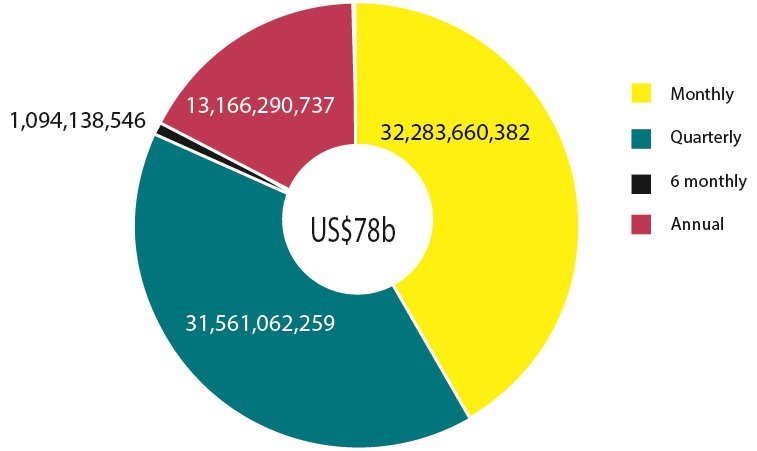Annual Report launched today!
Our latest Annual Report was launched today at the IATI Steering Committee meeting at UN City in Copenhagen.
Since our last report, we’ve seen a huge increase in organisations publishing IATI data – numbers are up by nearly 70%, from 210 in December 2013 to over 350 publishers from 40 countries today.
 Figure 1: Growth in IATI publishers over time (2011-2015). While the total number of IATI publishers has shot up to 353 over time, the number of new organisations sharing their data has remained fairly steady, as shown by the blue bars, representing the number of new publishers in each quarter.
Figure 1: Growth in IATI publishers over time (2011-2015). While the total number of IATI publishers has shot up to 353 over time, the number of new organisations sharing their data has remained fairly steady, as shown by the blue bars, representing the number of new publishers in each quarter.
There are more NGOs, private sector companies and Development Finance Institutions publishing to IATI than ever before. We have also welcomed new bilateral and multilateral donors and foundations as publishers.
Our political outreach has gone from strength to strength, with engagement at the Third Conference on Financing for Development resulting in the inclusion of IATI as a means of accessing reliable data in the Addis Ababa Action Agenda.
But, as well as celebrating our achievements, the report takes an honest look at our progress on improving the quality of IATI data.
There has been some significant progress on data quality, particularly in its timeliness.
 Figure 2: Timeliness of IATI data publication (US$). US$78 billion has been reported to IATI this year (2015 disbursements and expenditure up to 30 October 2015). Of this 80% (US$63bn) is from publishers updating their data at least quarterly 41% (US$32bn) is from publishers updating their data at least monthly.
Figure 2: Timeliness of IATI data publication (US$). US$78 billion has been reported to IATI this year (2015 disbursements and expenditure up to 30 October 2015). Of this 80% (US$63bn) is from publishers updating their data at least quarterly 41% (US$32bn) is from publishers updating their data at least monthly.
However, there is still plenty of room for improvement in terms of delivering on all three data quality dimensions (timely, forward-looking, comprehensive). Only 20% of expected spend for 2016 has been reported as forward-looking budgets and only 8% of expected spend for 2017 has been reported as forward-looking budgets. This makes it much more difficult for data users to access the information that they need from IATI.
The recent independent evaluation highlighted the need to increase the use of IATI data, particularly at country level.
Our analysis shows that the majority of partner country members are able to access IATI data for at least nine of the top ten development partners in their countries. But while coverage is improving, we know that the quality of some of this data could also improve.
However, while there are glimpses of progress, for example in Myanmar and Rwanda, there is little evidence that IATI data is being used systematically by partner countries, or by other types of data users.
As our Vice Chair says in the report, “There is no greater incentive for donors to publish high-quality IATI data than seeing their data being used in public reports, coordination and planning”.